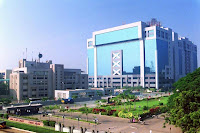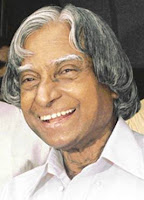http://www.pbs.org/thestoryofindia/gallery/photos/5.html
http://www.bbc.co.uk/history/ancient/india/gal_india_south_03.shtml
Though I am generally skeptical of such assertions about Oriental cultures by Western historians, I was so moved on hearing his statements that I started contemplating on the real greatness of the ancient Tamil civilization and how it fits into this modern world.
With an unbroken heritage of nearly 2500 years, the antiquity of Tamil culture far exceeds any other in present day India, and is comparable to ancient Rome and Greece. Indeed, traders from both the west and the east have been coming to the Tamil land for so many centuries. As Wood points out, Marco Polo described it as the 'most splendid' province on Earth. Though I have basic knowledge of Tamil history, the depth and impact of this ancient civilization had eluded me, until now. So what is this ancient Tamil culture? Am I also an inheritor of the legacy of this 'last surviving classical civilization'? This set me thinking about Tamil Nadu today, the way of life of its people and the changes it has undergone over the ages.
Having been brought up in a big city like Chennai, I always felt that I was out of touch with my cultural roots. But now I realize that this 'ancient culture' doesn't exist in some remote temple town, but in my very own house. I realized that I have to look no further than my own grandmother to get a glimpse of the classical merging with the contemporary! I understood something very important through her. What I found out was not something new; only my perception of it had changed. It is nothing but the way of life of the people themselves and how they fit into this culture.
Let us start with one of the greatest strengths of the Tamil civilization - its literature. The vastness and beauty of Tamil literature can be matched only by fellow classical languages like Sanskrit. From the stunningly succinct couplets of Thirukural, that are filled with universal wisdom, to the amazingly elaborate works of the Tamil Sangam of yore and the famous quasi-devotional lines of Avvaiyar. How are these relevant now? Well, the universality of these works is such that my grandma quotes them even for everyday situations! Surprisingly, even the youngsters use some memorable couplets from these works, only that they are given a modern filmy 'twist' to suit the modern times.

Next, we'll take one of the most famous symbols of Tamil culture - Bharatanatyam. Known as the dance of the Gods, this dance form has become renowned worldwide for its grace and beauty. Following the tenets of the Natyashastra, Bharatanatyam at its best evokes awe from admirers. True, one needs some knowledge about the complicated steps involved to appreciate it fully. My grandma always watches such shows on TV but I used to prefer a BBC or MTV over that. But one day, when I sat with her to see a Bharatanatyam competition, I was impressed with the depth of this dance form. The fact that even today, many little kids and adults worldwide show huge enthusiasm to learn this dance is a testimony to one of the most profound influences of Tamil culture. Not to mention the influence of Bharatanatyam in film choreography!

Then of course, music and song has always been an important part of the Tamil civilization. Amazing instruments like the Veena, with which the Goddess of knowledge, Saraswati is always depicted, and the Mridangam, considered to be Lord Ganesha's instrument, were invented here.

Home to the classical Carnatic music tradition, Tamil Nadu has always been musically rich. Nowadays, the appeal of Carnatic music seems to be back on the increase. Tamil Nadu has produced exponents like M.S. Subbulakshmi, the first musician to be awarded the Bharat Ratna and the only Indian musician to have performed at the United Nations. My grandma doesn't fail to listen to her 'suprabhatham' every morning after waking up, just like millions of other Tamils. Though I have also heard it many times before, seen in this new light, it amazed me. However, I am still yet to grasp the nuances of Carnatic music to fully appreciate it. I would love to do it one day. It should be noted that Tamil music is much more than Carnatic music. And in this modern age, the composers of Chennai are also doing a pretty good job, producing some wonderful music. No wonder then that one Mr. A.R.R won two Oscars, a feat never achieved by any Indian before. Though my grandma still prefers to listen to MS's songs, she doesn't mind listening to these 'less divines' as well.


Any visitor to Tamil Nadu cannot miss the majestic temples of this land. From the soaring gopurams of Madurai to the vast courtyards of Srirangam, from the long corridors of Rameshwaram to the impressive Thanjavur big temple. And not to forget the mysterious monuments of Mahabalipuram. Tamil Nadu is dotted with masterpieces of Dravidian architecture. For a long time, these have been the centers of knowledge and culture and they continue to thrive even today. No matter how modern the Tamils become, they always bow their heads before the Gods, fold their hands and wear vibuthi on their foreheads every morning. Though I stopped wearing such marks on my forehead years ago, my grandma continues to insist that I should do so. And she doesn't miss a single religious occasion on the calendar. This piety will continue to be an integral part of every Tamil, no matter if he is in Beijing or Bangalore, Chicago or Chennai.

Coming to the economics of things, the Tamil land has always been a land of riches. Under the Cholas, international trade and commerce was at its peak with traders coming from as far as Europe and China. All the ancient Tamil kingdoms had sound economic policies that ensured the prosperity of its people. We can see this prosperity continuing even today. Tamil Nadu is the third largest state economy in India and is a top destination for FDI. Not only is it one of the most developed and urbanized states in India, it also has low unemployment and peaceful labor conditions. Unlike many other Indian states, the wealth here is spread out more evenly and is not concentrated in the capital alone. Indeed, even an agricultural town like Pollachi in the west has many millionaires. Moreover, the economy is not dependent on any one sector and is diversified among services, manufacturing and agriculture.

Another aspect that is integral to the Tamil way of life is the emphasis on learning and knowledge. This land has been an intellectual powerhouse of India and has among the highest literacy rates. No wonder then that Jawaharlal Nehru described Mylapore in Chennai as the 'master brain of India'. Tamil Nadu has two Nobel laureates, both being extraordinary physicists. In addition to that distinction, Tamil Nadu has 8 out of 41 Bharat Ratnas, the highest for any state. That is a whopping 20% for a state, which has less than 6% of India's population. It includes academics and scientists par excellence like Dr. S. Radhakrishnan and Dr. Abdul Kalam. Interestingly, when the Bharat Ratna was instituted by the Indian government in 1954, the 3 recipients that year were all Tamils! This tradition of intellectual excellence continues to this today, with Tamils holding various leadership roles in research, academia and industry in India and around the world. Moreover, Tamil Nadu has 3 colleges in the top 10 in engineering - the IIT Madras, the NIT Trichy and the Anna University. Once again, that is the highest for any state. But how does my grandma fit in all these? Once when I told her that I had scored 99% in science in my CBSE exams, her reaction was, "You should not have missed that 1 mark!" Little wonder then that Chennai almost always tops the CBSE and ICSE results!


There are so many such aspects of this ancient culture that I can keep talking about. Just like Wood, I too am really amazed at how all these blend well into this modern world. Tamils are very unassuming and humble people. Despite the depth of culture behind them, they only look ahead. They merge the ancient and the modern in their own unique way. Outsiders mistakenly assume this for conservatism or hypocrisy. It may or may not be true, but what is true is that, compared to most other cities in India, Chennai retains its classical charm while continuing on the path of becoming a modern cosmopolitan city. It does have the global IT fairs and also the Margazhi cultural festivals. Most Tamils, including my beloved grandma, are at ease equally in both these worlds. After all, this 'last classical civilization' continues to evolve and acquire more contemporary colors to add to its long and glorious heritage.
2 comments:
Very well articulated, A.K.K.
Best regards to your grandmother.
Hello,
I am a student of Class XII and would be very grateful if you could give me some advice on the NTU vs IIT situation as I am in the same situation now.
If possible please contact me
Mohit
Post a Comment